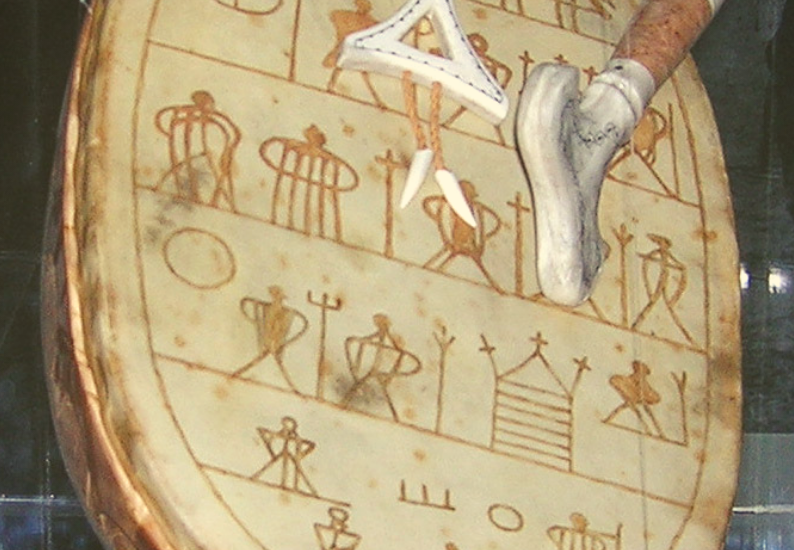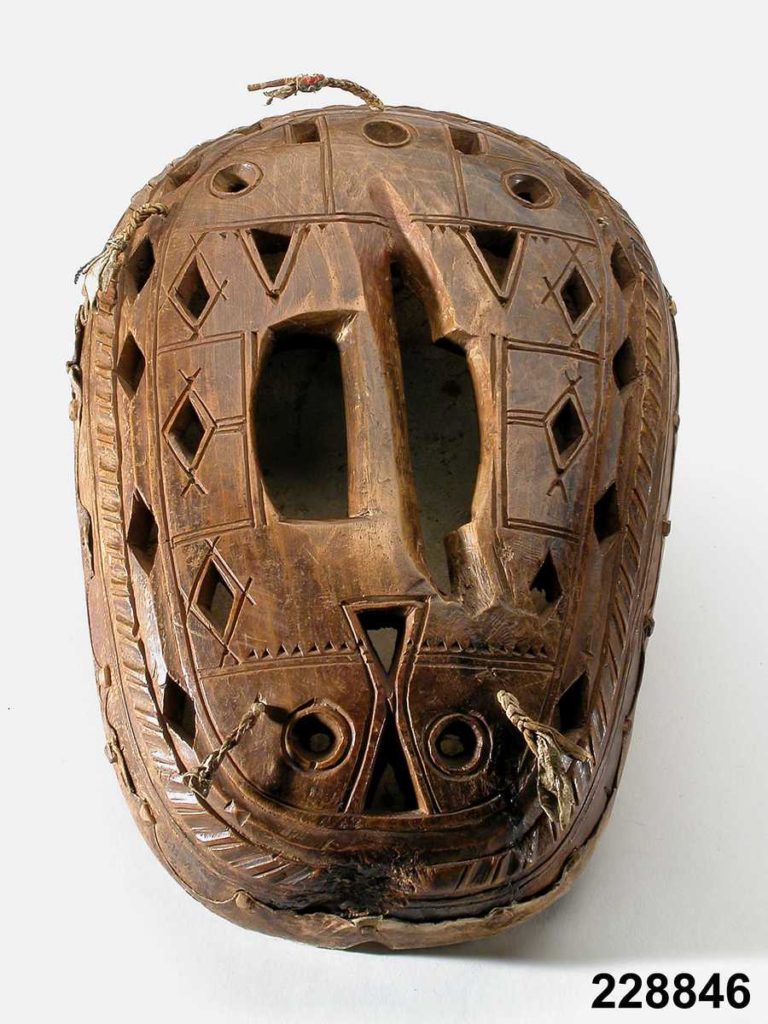THE SAMI SHAMAN DRUM – AN INTRODUCTION

 You are Reading..
You are Reading..
THE SAMI SHAMAN DRUM – AN INTRODUCTION
The most outstanding symbol of the Sami shaman may very well be his drum. Written by guest blogger Ove Kåven.
The most outstanding symbol of the Sami shaman may very well be his drum. Every drum is different, ideally crafted specifically for its owner, and typically by the owner. Each drum has its own personality and spirit, which ideally matches the personality and spirit of its shaman.
And on the drumhead, the Sami shaman would paint their own personal map of the spirit world, based on their own journeys through it.
Also read: Shamanism – an introduction.
The design and construction of the drums varied considerably across the Sami territories.
Bowl drums
In the North, shamans typically used bowl drums. They were oval, relatively small (easy to carry around and hold), and the maps typically showed the various realms of the spirit world as if they were floors in a house. An example of this design is the drum of Anders Paulsen, which has been interesting to historians because, when he was arrested for witchcraft, he cooperated with the authorities and explained what all his symbols meant, so this information was written down. (It is unfortunate that, although the authorities were planning to drop charges because he had not harmed anyone, he was killed by an insane jailmate.)

Back of a bowl drum.
From Wikipedia: Sami drum, probably from Lule Lappmark. Bowl drum. 40 x 27 cm. Described and depicted by no:Johannes Schefferus in his book Lapponia (1671); later described as No 64 in Ernst Manker’s Die lappische Zaubertrommel (1938). Schefferus says that it belonged to chancellor Magnus Gabriel de la Gardie; later in 1693 in Antikvitetskollegium. Statens Historiska Museum, Stockholm (SHM 360:2) Now at Nordiska museet, Stockholm
Also read: Lapponia – one of the oldest documents about Sami people.
Frame drums
In the South, frame drums were more popular. They were larger, elliptical, and the drumhead maps typically had a concentric design, usually with the Sun in the center, the Earth realm along the drumhead edge, and the spiritual realms inbetween. The symbol for the Sun was a
diamond shape, with four rays shooting out in the four cardinal directions (North, South, East, West). This can be used to separate the drum into four regions. A good example of a design of this type, where the meaning of the symbols is also believed to be understood, may be the
Bindal drum (“Bindalstromma”).
From Wikipedia: The sami drum Frøyningsfjelltromma; confiscated by norwegian or swedish ministers in 1723; since 1837 in Meininger Museum, Meningen
Sacred objects
Shamanic drums were sacred objects, and treated as such, although they could be used in a limited capacity by people who were not proper shamans. Many people had access to family drums, which would be stored in a special place in their dwellings (like in the sacred space behind the fireplace). The drums would be brought out whenever necessary, to ask the spirits for protection or guidance. To get answers from the spirits, an indicator (e.g. a brass ring, or a carved piece of reindeer antler) could be placed on the drumhead, so that beating on the drum would move the indicator around. The path it took around the drum could
then be interpreted to get some idea of what the spirits want.
Proper shamans, on the other hand, could use the drum in several other ways. The most well-known is, of course, that the monotonous drumming would allow the shaman to go into a trance, where a journey into the spirit world becomes possible. Once in the spirit world, the shaman can ask spirits and gods for answers or favors, and/or do various kinds of
healing work.
Also read: Realm of Sáivu.
Surprisingly, however, that was probably not the most common way to use the drum. After all, strong spirits can, in many cases, intervene directly in this world, as long as they have access to a power source here. To that end, the sound of one or more drums can by itself fill a room with enough energy to allow the spirits to do many things. Or, the
energy of the drumbeat can be directed directly towards a person.
Furthermore, some shamans have been said to be so good that they could get answers from the drum just by holding it up in front of them, without having to beat on it at all.
All in all, there are many fascinating mysteries surrounding the shaman’s drum. It is certainly no mere musical instrument (and you should think twice before using it as one!)
More about Ove Kåven: www.ovekaven.com
More articles by Ove Kåven: Legacy of Johan Kåven
Also read: Shamanism – an introduction.
Also read: The Sami Flag – Sami are the children of the sun.
Link til Wikipedia: https://no.wikipedia.org/wiki/Runebomme

Is it true that you could go to jail for owning a Sami drum in Finland until the eighties?
Hello Eroi.
Thank you for commenting! We cannot answer this for sure, but we know Finland has not been very tolerant to Samis. If this has happened in the 80ies we have to make research on to find out…
Best regards Elin & Jungle.